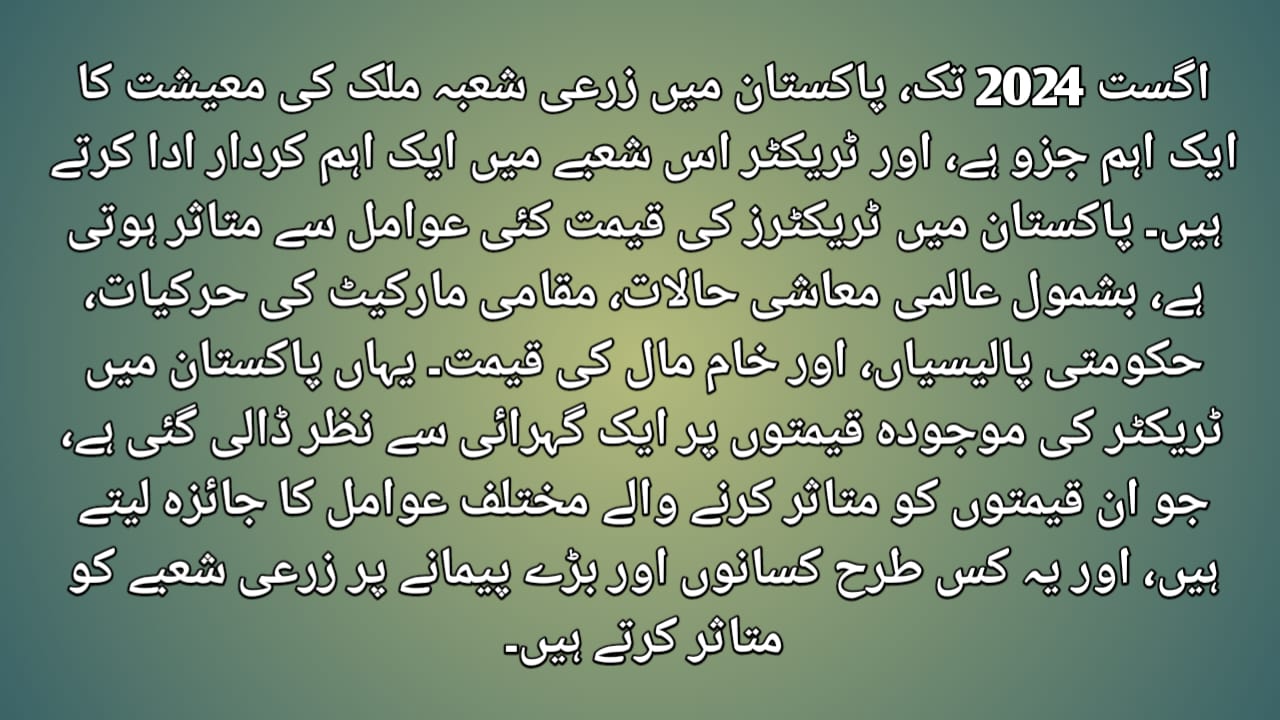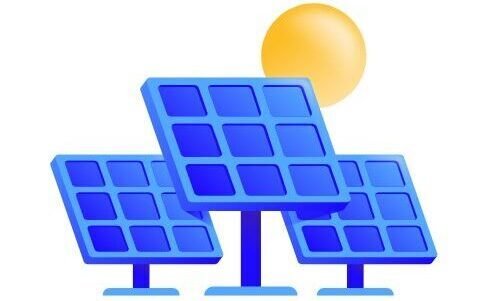As of August 2024, the agricultural sector in Pakistan remains a vital component of the nation’s economy, and tractors play a crucial role in this sector. The price of tractors in Pakistan is influenced by a range of factors, including global economic conditions, local market dynamics, government policies, and the cost of raw materials. Here’s an in-depth look at the current tractor prices in Pakistan, examining the various factors affecting these prices, and how they impact farmers and the agricultural sector at large.
Current Tractor Prices
As of today, tractor prices in Pakistan vary widely based on the brand, model, and specifications. On average, the price of a new tractor ranges from PKR 2.5 million to PKR 5 million. The variations in price are primarily due to differences in engine power, features, and technology. For instance:
- Entry-Level Tractors: These typically fall in the range of PKR 2.5 million to PKR 3 million. These models are usually smaller, with lower horsepower, and are suitable for smaller farms or specific agricultural tasks.
- Mid-Range Tractors: Priced between PKR 3 million and PKR 4 million, these tractors offer more power and advanced features compared to entry-level models. They are designed for medium-sized farms and can handle a broader range of agricultural operations.
- High-End Tractors: These can cost anywhere from PKR 4 million to PKR 5 million or more. High-end models are equipped with the latest technology, higher horsepower, and advanced features that increase efficiency and productivity. These tractors are typically used on large farms and in commercial agricultural operations.
Factors Affecting Tractor Prices
Several factors contribute to the pricing of tractors in Pakistan:
- Global Supply Chain Issues: The global supply chain has been experiencing disruptions due to various factors, including geopolitical tensions and economic fluctuations. These disruptions affect the availability and cost of raw materials used in tractor manufacturing, such as steel and electronic components.
- Import Duties and Taxes: Pakistan relies heavily on imported tractors and components. The government imposes import duties and taxes, which can significantly impact the final price of tractors. Any changes in these duties or taxes can lead to price adjustments.
- Exchange Rates: The fluctuation in the exchange rate between the Pakistani Rupee (PKR) and major currencies like the US Dollar (USD) can affect the cost of imported tractors and components. A weaker PKR can lead to higher prices for imported goods.
- Inflation: General inflationary trends in the economy also influence tractor prices. As the cost of living and production increases, so do the prices of agricultural machinery.
- Technological Advancements: Tractors equipped with the latest technology, such as GPS navigation systems, advanced hydraulics, and fuel-efficient engines, generally command higher prices. The incorporation of such technologies aims to enhance productivity and operational efficiency.
- Local Manufacturing vs. Imports: Local manufacturers may offer competitive pricing compared to imported tractors, but they also need to contend with local production costs, which can affect pricing. Importing tractors might be more expensive due to shipping costs and tariffs.
Impact on Farmers
The cost of tractors has a direct impact on farmers and the agricultural sector:
- Access to Technology: The high cost of modern tractors can limit access to advanced technology for smaller farmers. This disparity affects their productivity and efficiency compared to larger farming operations that can afford high-end machinery.
- Financial Strain: For many small-scale farmers, the cost of purchasing a new tractor can be prohibitive. This financial strain can lead to reliance on older or less efficient machinery, which may not meet the demands of modern agricultural practices.
- Government Subsidies: To alleviate the financial burden on farmers, the Pakistani government sometimes provides subsidies or financing options for purchasing agricultural machinery. These initiatives aim to make tractors more affordable and accessible.
- Economic Viability: The cost of tractors affects the overall economic viability of farming operations. Higher costs can lead to increased production expenses, which may impact the profitability of farming enterprises.
Future Outlook
Looking ahead, several trends could influence tractor prices in Pakistan:

- Technological Innovation: Continued advancements in tractor technology may lead to new models with improved features. While these models might be more expensive initially, they could offer long-term cost savings and efficiency improvements.
- Government Policies: Changes in government policies related to agriculture and import duties could impact tractor prices. Supportive policies aimed at boosting the agricultural sector may help in making tractors more affordable.
- Economic Conditions: The overall economic conditions, including exchange rates and inflation, will continue to affect tractor prices. Monitoring these factors will be crucial for anticipating future price changes.
- Local Production: An increase in local manufacturing of tractors could help reduce costs. Investments in domestic production capabilities may lead to more competitive pricing and greater availability of tractors.
In conclusion, the price of tractors in Pakistan in August 2024 reflects a complex interplay of global and local factors. While the cost remains a significant consideration for farmers, ongoing developments in technology, government policies, and economic conditions will play a crucial role in shaping the future landscape of tractor pricing and accessibility in the country.

